Tripolis
Peloponese railway network was one of the largest network of narrow gauge (1000mm compared to 1445mm) used for long distance travel. It was possible to catch sleeper train in Athens late night sleep well and wake up in the coastal city of Kalamata. The route was well cared and in 2005-2010 it was partially rebuilt using EU funds to increase travel speed.
Unfortunately after this there was Greek financial crisis and a lot of routes were suspended (both normal and narrow gauge). Currently there is very small traffic on the peloponese narrow gauge network - on spectacular Kalavrita rack railway, there is suburban train running in Patra and there is train that connects sea side to ancient Olympia via Katokolo. Last tourist train on longer stretch run in 2015 and right now it is not possible to run even tourist train because of vegetation and washed tracks in several place.
Being fascinated for the long time in the long distance railbiking I decided to cover part of route on the railbike. What is railbike? There are many ideas - more or less complicated. In my case I decided to build very lightweight rail guide frame that will allow me to run on normal bike on railway tracks.
Many guys on railbike uses cars to get on place and back, but I wanted to not be limited by car. My idea was to cover entire route from Tripolis to the sea. So I traveled by bus (with packed railbike) to Tripolis and my idea was to catch another bus from the sea side. I was aware that buses will be not available in the middle of my route becuase all bus traffic was diverted to highway which is in different valley than railway tracks.



Steno
Steno was the silent station with several tracks, I already visited this place last time. From this point tracks started to gain elevation.
The vegetation was not so big problem as earlier.
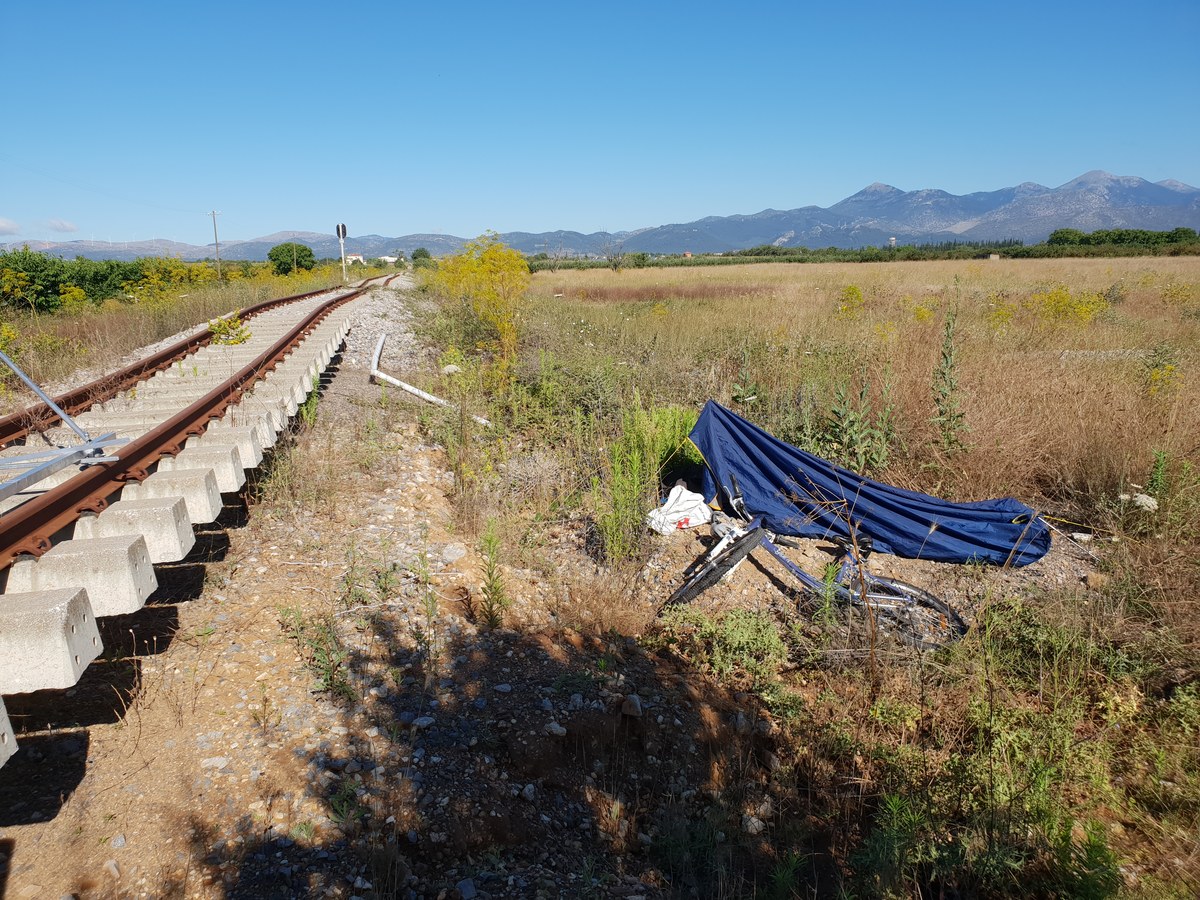











Partheni
Partheni is another station - last station on Tripolis plain. More remote than Steno.
Silent peaceful city. Tracks goes parallel to road then you enter shady station.
I filled my water supplies (however there was no food shop) and moved forward - one kilometer later there is short tunnel.
After tunnel everything changes - no more green vegetation, no more spiny bushes of raspberries.
From this moment I will be only going down all the way to the see. First bridges and marvelous view.





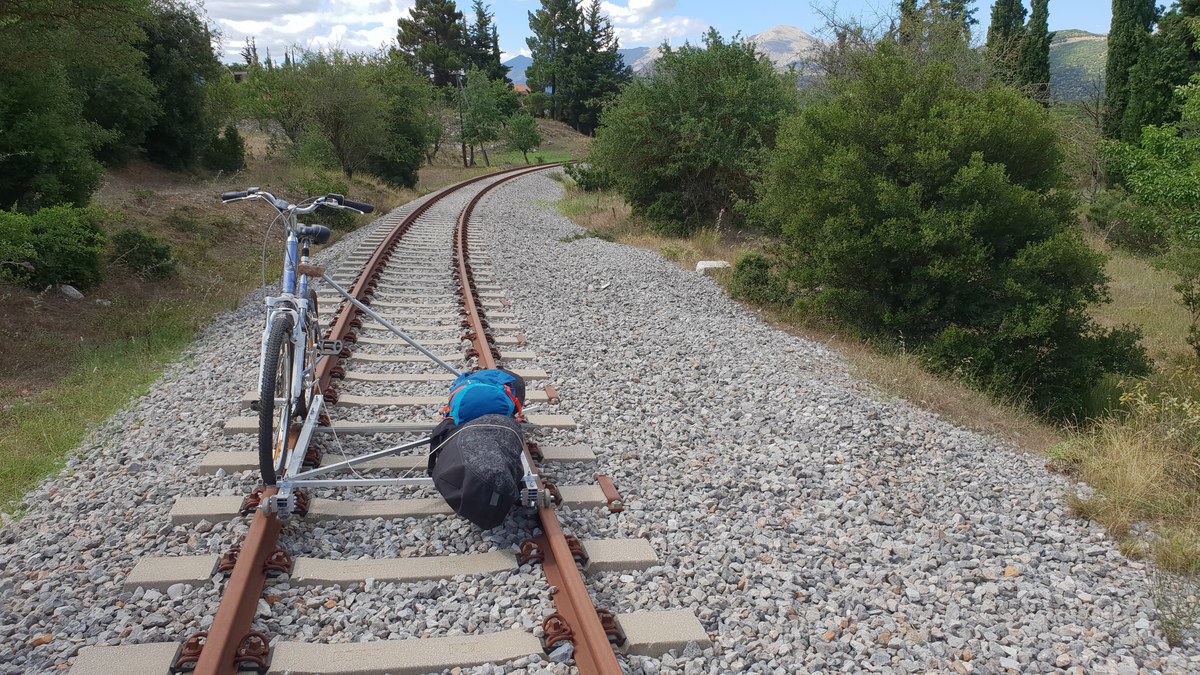














Elaiochori
I've been in Elaionchori before - but this time I was lucky - the general shop was open, so I was able to get food supplies. And of course water.
I spent some short time in Elaionchori and moved forward to the bridge. My plan was to camp near the bridge.






Elaiochori Bridge
The steel Elaionchori bridge is one of the most marvelous architecture objects on route.
I setup the tent on the opposite side of the bridge and my plan was to move forward to Achlamabandos next day.
Suddenly I get message from Konstantin that they are going to explore Hranoi - Desillas part with they vertical railbikes.
Wow - great idea - the problem was that Elaionchori is little behind the main route, but RailBikeGR folks were so nice that they come to pick me up.
After spending great day on the other side I returned to Elaionchori after midnight.
Next day I started my route forward to Ahlamavambos bridge - it was all all way down.
The route distance between Elaionchori and Andritsa is just 8 km but rail tracks do 22 km on the loop to have decent gradients.





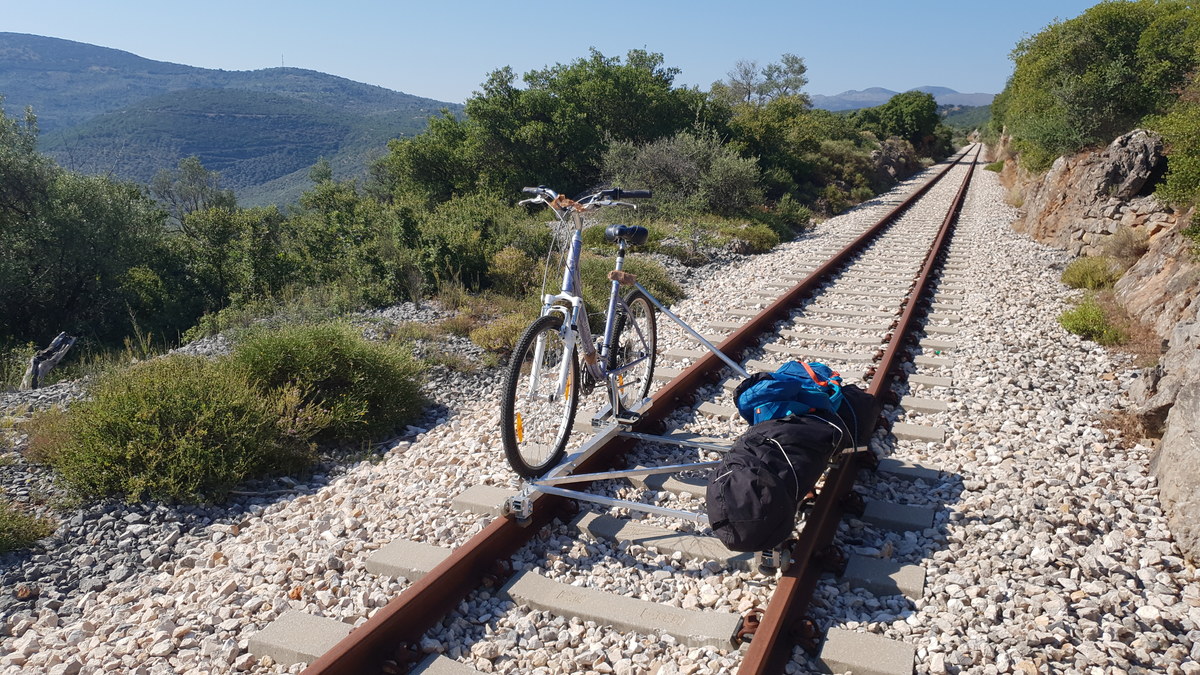
Achladokampos Bridge
The Ahlavakambos bridge is the longest bridge on the peloponeses metrical gauge network.
This bridge has to wait very long time for rebuilding after descrutions during WW II. It was rebuild after many years. In the meanwhile trains used zig-zag spurs to move over. The spur is still on place, however disconnected from main tracks at the end of the spur there Ganz DMU remains with several wreceked wagons.





















Achladokampos Station
My Greek friends told me what is Achladokampos is about - it means pear valley.
And in fact the entire valley was full of trees olive, apples and pears you can reach them from the track. Achladokampos station is far down from village but there is restaurant nearby with a plenty of food and cold Coke (I recomend). It is also possible to get water from the water pump.
Then the track goes over the plain for few kilometers and enters gorge. In this place there we are only five kilometers to tracks from Elaionchori. However it is much higher - thats why train encircle entire valley and cars can travel more directly with steeper gradients.
After few kilometers the tracks enters more narrow gorge. It is not parallel to road anymore. The views in gorge are spectacular and finally there is Andritsa.










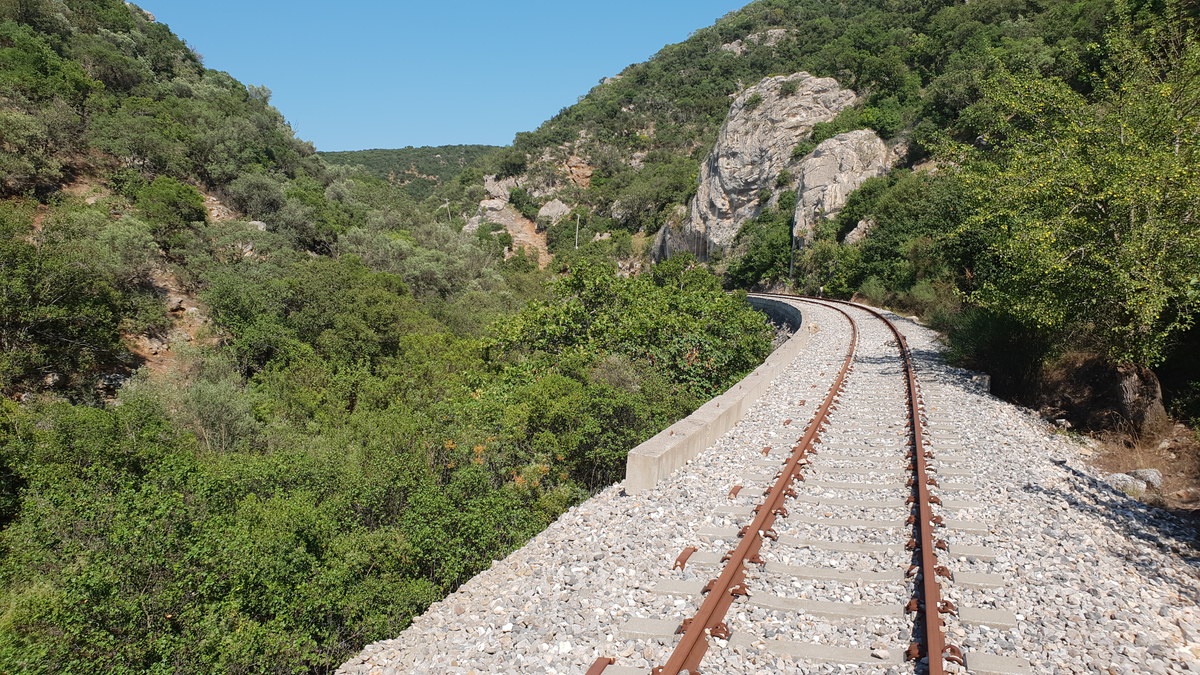







Andritsa
As usual station is not very close to village. The interesting fact is that we are crossing first big river after leaving Tripolis plain. There is also water moving under the tracks in small draings. Andritsa station is very green. After leaving Andritsa we are again going parallel to the road. There are lovely vineyars in the valley and several more bridges.









Last night
I spent last night in tent near the nice view of the vineyard in valley. I known that it is close to get to the sea.




Off the tracks
My idea was to finish my route at Myloi station near the however after 6km the vegation becomes too problematics. So I decided to leave tracks a little earlier. There were orange trees everywhere around. I packed my equipment and traveled last 5 km to Kivery by pushing my bicycle.
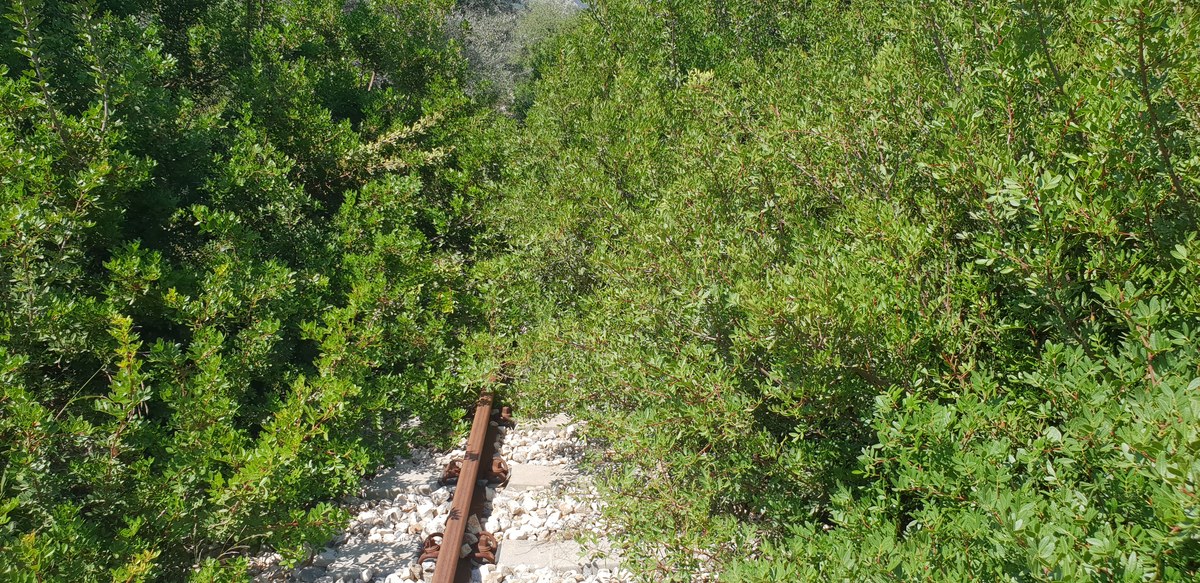
Kiveri
Sea and breeze! Nice seaside resort Kiveri. The water was really chilling.
Tripolis to Sea by rail - mission accomplished
Stats: 49 km on rails, 5 km pushing on road, height difference: 655 m (from 655m at Tripolis to sea level, however there was higher point at Partheni tunnel.)





